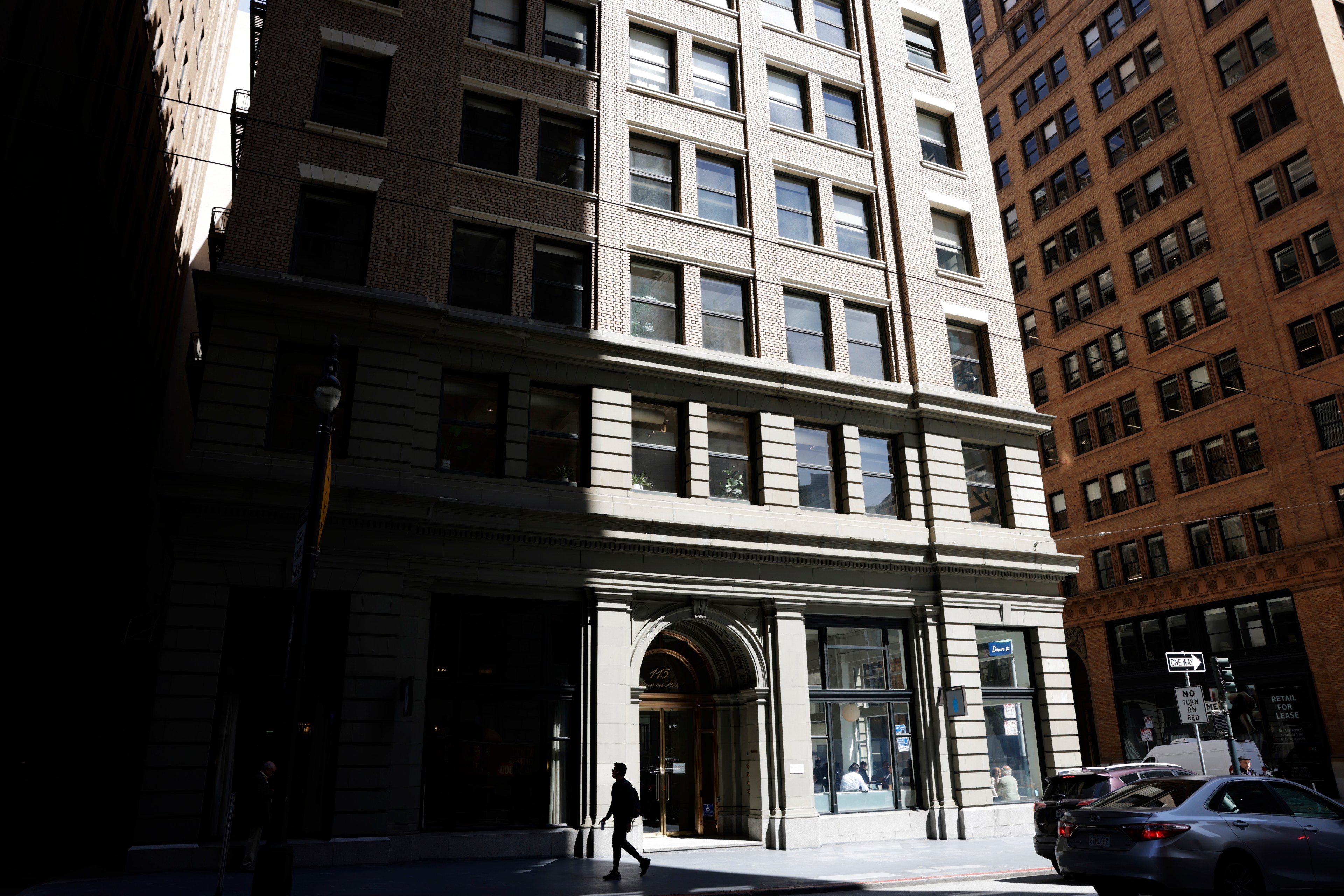With a $54 million loan from Bank of America coming due for its downtown San Francisco building at 115 Sansome St., the Vanbarton Group held a private auction last December to help the bank recoup whatever money it could get back.
More than 20 bids came in for the restored 14-story beaux-arts building with a ritzy Japanese omakase restaurant and Blue Bottle Coffee on the ground floor.
But lo and behold, the winner of that auction ended up being none other than Vanbarton itself. The final price came in at around $35 million—nearly 40% off the original loan amount and 60% less than the New York investor’s original 2016 purchase price of $83 million.
Amid tanking real estate values, property owners with loans coming due have tough choices to make. Either overpay for the outstanding balance; walk away and let the building slip into foreclosure (not a good look); or negotiate a graceful exit for the bank.
Gary Kaplan, a partner at Farella Braun + Martel LLP who specializes in restructuring and bankruptcy issues, explained that in most cases, lenders are loath to take back and operate commercial buildings themselves.
“They just want to get paid,” Kaplan said of lenders, and because commercial deals are mostly transacted through limited liability companies, recouping value on the property is their only recourse.
To that end, some banks are doing the same math as building owners and are willing to take a short-term hit if it means settling the tab once and for all. An increasing number of savvy property owners like Vanbarton are seeking to use that leverage to pay off their debt at a discount and reposition themselves to take control of their own destinies on properties they still believe in.
Public records show Vanbarton now owns an all-equity stake in 115 Sansome, meaning it is free and clear of the debt. Now, the company can use its money, which otherwise would have gone to the bank, to invest back into the property and offer lower rents to prospective tenants. Bank of America, which sources said supported the auction, declined to comment on the matter.
“The figures that borrowers and owners got [before the pandemic] are not as relevant anymore as the facts on the ground,” Kaplan said. “Forget about the original money, it’s gone.”
New calculations
Unlike typical home mortgages, where a borrower chips away at debt by paying a combination of interest and principal over time, when commercial mortgages come due, lenders usually come for the entire loan amount all at once.
Many of these loans were made when San Francisco’s commercial real estate market was booming, with low vacancy rates driving top-tier rents. Investors’ bet was that not only would buildings’ earnings pay for themselves, but there would also be healthy profit margins.
Less than a mile down Market Street from 115 Sansome St., a similar situation played out at 116 New Montgomery St., a nine-story office building that real estate firm Jamestown LP bought in 2015 for $111 million.
The firm took out a $61 million loan on the property from Capital One that matured last March, according to public records.
Jamestown’s unwillingness to pay that total led the lender to serve the landlord a notice of default late last year, threatening to foreclose upon the building if the loan wasn’t repaid. However, prior to an auction being scheduled, both sides cut a deal “whereby the outstanding loan balance was satisfied,” said Jamestown spokesperson Lisa Serbaniewicz. She did not specify the final price reached in negotiations.
Public records only show that Jamestown repaid its lender in March and, like Vanbarton, is now the sole owner of its building. Capital One did not respond to requests for comment. The deal was first reported by the San Francisco Business Times.
Kaplan, who was not involved in either of Vanbarton or Jamestown deals, said when it comes to restructuring debt on commercial real estate, lenders will request a full third-party accounting of the building’s finances before cutting a deal.
Everything from how rent is collected to what constitutes an operating expense will be scrutinized by agents chosen by the lender, Kaplan said. Borrowers, on the other hand, can’t use the bank’s loan portfolio against them in negotiations. Instead, since they have firsthand knowledge, their goal is mainly to convince lenders that conditions on the ground should influence pricing.
But these days, lenders are much more concerned with understanding local markets than they used to be. “It’s not just about the revenue stream anymore,” Kaplan said. “Now, they want to know things like how different parts of downtown are recovering so they know what concessions to make or terms they should accept.”
Even for properties where the original owner is either unable or unwilling to negotiate their own deals, there are vultures waiting on the wings to pick up distressed debt and buildings at bargain prices.
For example, partner companies Ballast and Brookfield got a roughly $300 million discount on $915 million in debt they purchased tied to 2,165 San Francisco apartment units owned by real estate investor Veritas. The deal made the partnership the new biggest apartment landlord in the city.
In February, private equity firm Fortress Investment Group acquired a $22.2 million loan tied to 660 Market St. The cost to acquire the loan was not disclosed, but it was likely a discount.
In a Feb. 22 podcast interview with Bloomberg, Fortress co-CEO Joshua Pack said the company has purchased more than $1.5 billion of office loans from financial institutions, generally at a 30%-50% haircut.
“This is going to be a trillion-dollar opportunity that’s going to exist over the next few years,” he said. “We’ve been looking in where banks are stepping out.”
